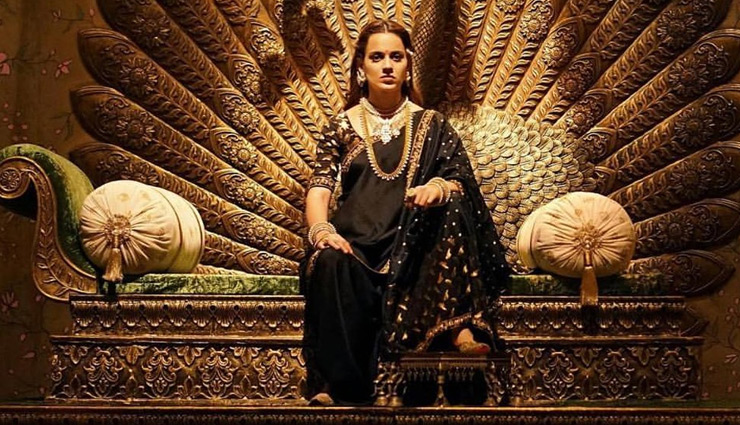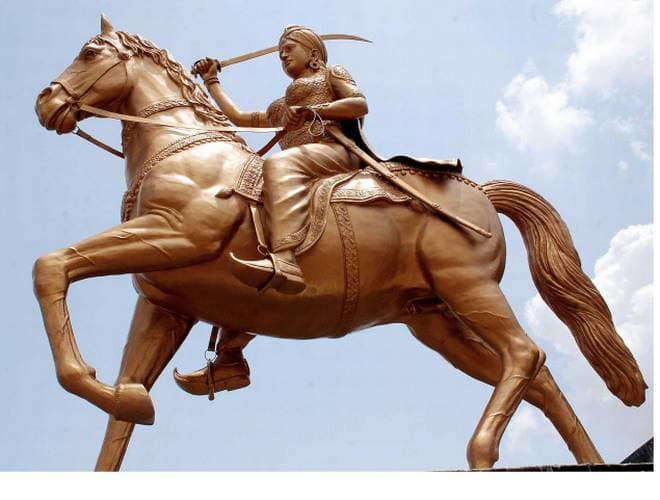- Home›
- Entertainment›
- Inspired By ‘Manikarnika’? Here Are 10 Lesser Known Warrior Queens Of India
Inspired By ‘Manikarnika’? Here Are 10 Lesser Known Warrior Queens Of India
By: Priyanka Maheshwari Sat, 26 Jan 2019 12:00:32

As Manikarnika is all set to release tomorrow, we list down 10 warrior queens of India whose stories of bravery and courage will both inspire and surprise you at the same time. From Begum Samru, the ruler of Sardhana’s story of a young girl who once danced in kothas and eventually became a woman who would rule a kingdom for 55 years to Onake Obavva- wife of a guard who single-handedly killed her enemies one by one, Indian history is filled with stories of brave women.
We list down the 10 warrior queens of India whose stories are as aspiring as that of Manikarnika: The Queen of Jhansi
* Rani Mangammal
Rani Mangammal was a queen regent on behalf of her grandson, in the Madurai Nayak kingdom in present-day Madurai, India, in 1689—1704. She was a popular administrator and is still widely remembered as a maker of roads and avenues, and a builder of temples, tanks and choultries with many of her public works still in use. The Madurai people weren’t happy to be ruled by a woman, but in time, Mangammal, proved a capable and efficient leader, both in times of peace and war. She was a good military leader, had great diplomatic and political skills, and knew how to administer a country.
* Rani Rudrama Devi
Rani Rudrama Devi was a monarch of the Kakatiya dynasty in the Deccan Plateau from 1263 until her death. She was one of the few women to rule as monarch in the Indian subcontinent and promoted a male image in order to do so. Rudrama Devi’s toughest battles was with the Sauna ruler Mahadeva. According to records Rudrama Devi led from the front, put Mahadeva to flight, pursued his army and forced him to sign a treaty that included a penalty of one crore gold coins.

* Velu Nachiyar
Velu Nachiyar, the 18th century queen from Sivagangai district of Tamil Nadu is widely known as the first queen to put up a resistance against the colonial power, even before the Rani of Jhansi. In order to take revenge from British troop who killed her husband in 1772 during the Kalaiyar Koil war, Velu Nachiyar led the charge against her enemies She is also credited to have been the first person to use a human bomb – Kuyili, her loyal follower (and some say adoptive daughter), doused herself in oil/ghee and set herself aflame to blow up the ammunition of the British. Velu Nachiyar was successful in recapturing her kingdom and became the queen of Sivagangai once again.
* Onake Obavva
Onake Obavva was wife of Kalanayaka who was a guard of a watchtower in the rocky fort of Chitradurga. During the 18th century, one day when Kalanayaka was away for lunch, Obavva was on guard, she spotted a Hyder Ali soldier trying to sneak in through the hole. The soldier was eventually killed by Obavva by using a pestle. As more and more soldiers tried to sneak in one after the other, Obavva killed each of them and hid their bodies. She fought the forces of Hyder Ali single-handedly with a pestle in the kingdom of Chitradurga of Karnataka. She was found dead on the same day, owing either to the shock of killing so many or having being killed by one of them.
* Bibi Sahib Kaur
Bibi Sahib Kaur (1771–1801) was a Sikh princess and elder sister of Raja Sahib Singh Sidhu of Patiala. Her brother recalled her after her marriage and appointed her prime minister in 1793. She led armies into battle against the British and was one of few Punjabi Sikh women to win battles against a British general.
* Razia Sultana
Razia Sultan was the first Muslim female ruler. She ruled Delhi from 1236 to 1240 as the Sultan herself. Razia refused to be addressed as Sultana because it meant ‘wife’. After becoming the Sultan of Delhi she adopted a gender-neutral attire and proved to be an efficient, capable, and brave ruler. She was widely respected and loved by her officials and public. Razia was destined to be one of the greatest sultans of Delhi but her closeness to a slave became her undoing.

* Abbakka Rani
Abbakka Rani, the only woman in history to confront, fight and repeatedly defeat the Portuguese for over four decades. Her indomitable spirit are at par with the legendary Rani Laxmi Bai of Jhansi and Rani Chennamma of Kittur. For her bravery, she came to be known as Abhaya Rani (The fearless queen). She was also one of the earliest Indians to fight the colonial powers. In 1851, Rani Abbakka was wounded in the crossfire and was captured by the enemy with the help of a few bribed chieftains. She breathed her last in captivity.
* Chand Bibi
Chand Bibi was an Indian Muslim regent and warrior. She acted as the Regent of Bijapur (1580–90) and of Ahmednagar. Chand Bibi is best known for defending Ahmednagar against the Mughal forces of Emperor Akbar in 1595. Jita Khan, a eunuch valet of Chand Bibi spread the news that Chand Bibi was a quisling. Chand Bibi was then killed by an enraged mob of her own troops and was mercilessly put to death right in the palace where she was born. She was buried in the Fort of Ahmednagar. No tomb marks her grave.
* Begum Samru
Begum Samru’s story from a young girl who once danced in kothas and eventually became a woman who would rule a kingdom for 55 years, is definitely an inspiring one. A mercenary called Walter Reinhardt Sombre, once visited the red light district in Delhi in the year 1765. She immediately fell in love with 15-year-old Farzana aka Begum Samru, who was a dancer in Khanum Jan’s kotha. She eventually became the ruler of Sardhana, a small principality near Meerut. She was the head of a professionally trained mercenary army, inherited from her European mercenary husband, Walter Reinhardt Sombre. Her true story echoes in the stones of Sardhana, where she ruled, turban on head and hookah in hand, four and a half feet tall, the beautiful Begum Samru.
* Kittur Chennamma
Kittur Chennamma (23 October 1778 – 21 February 1829) was the Rani of Kittur, a former princely state in Karnataka. She led an armed force against the British East India Company in 1824 in defiance of the doctrine of lapse in an attempt to maintain Indian control over the region, but was defeated and died imprisoned. One of the first female rulers to rebel against British rule, she has become a folk hero in Karnataka and symbol of the independence movement in India.





